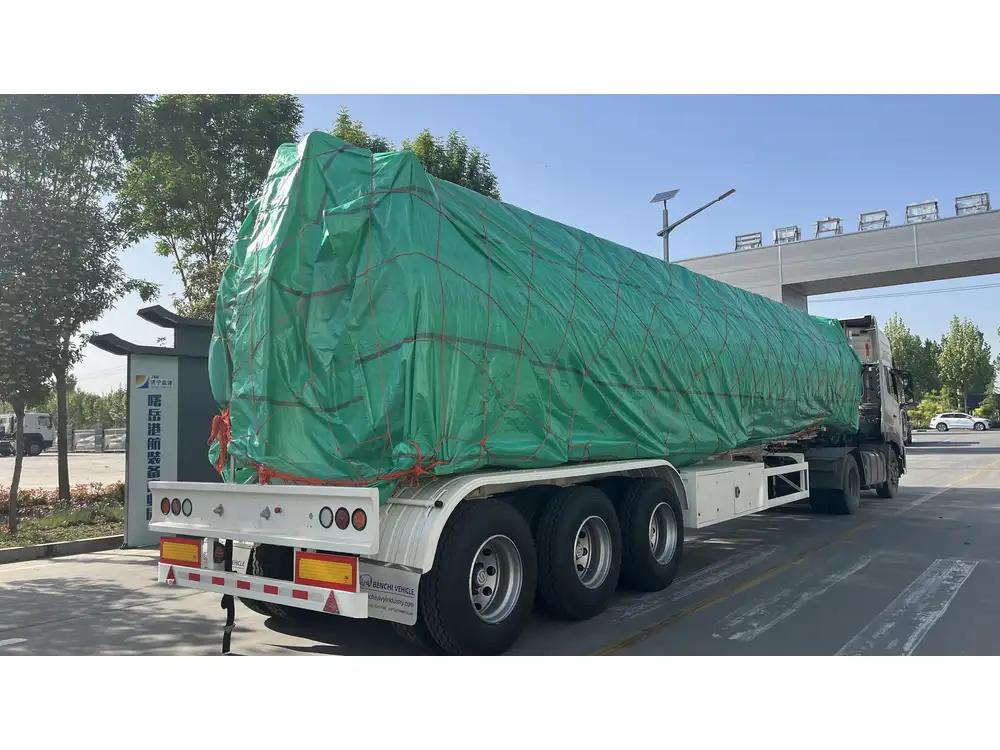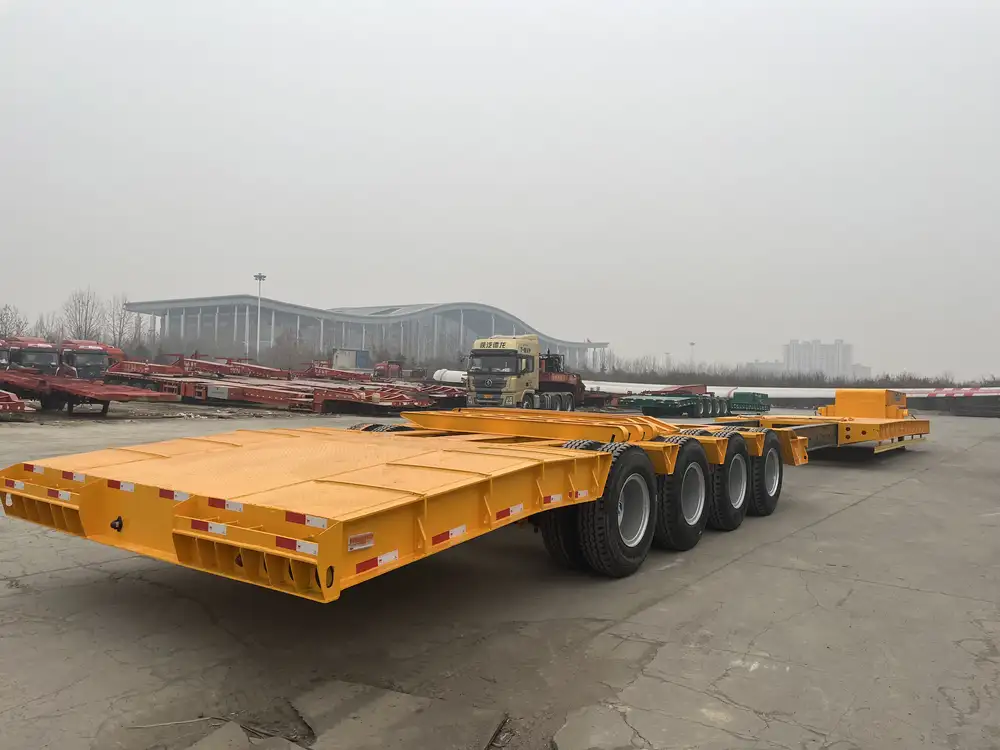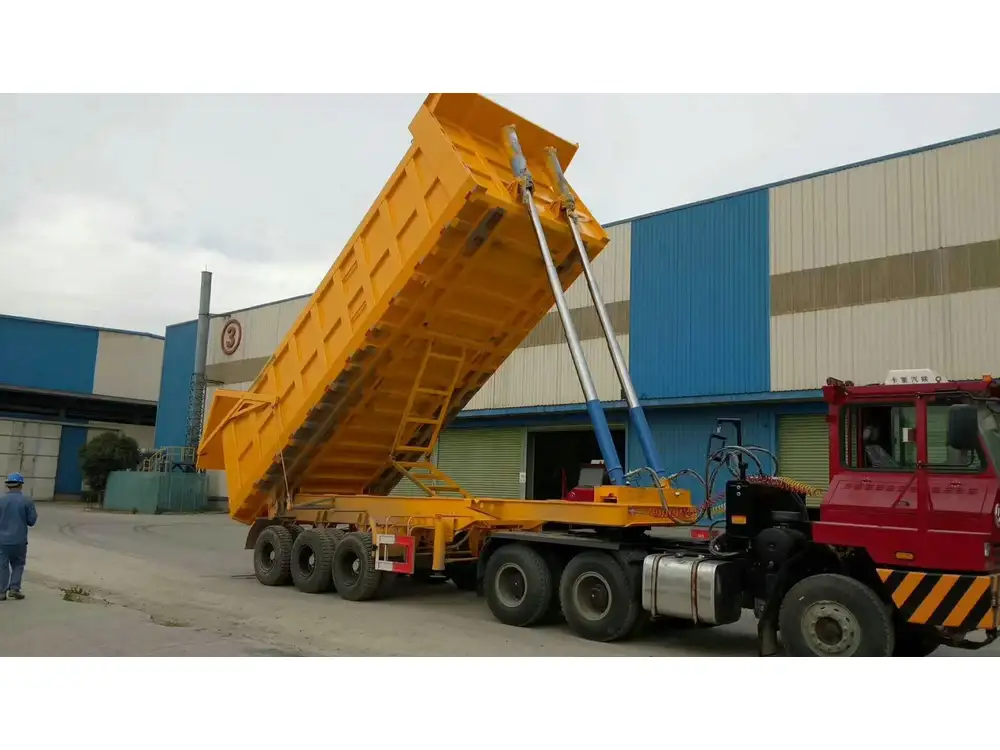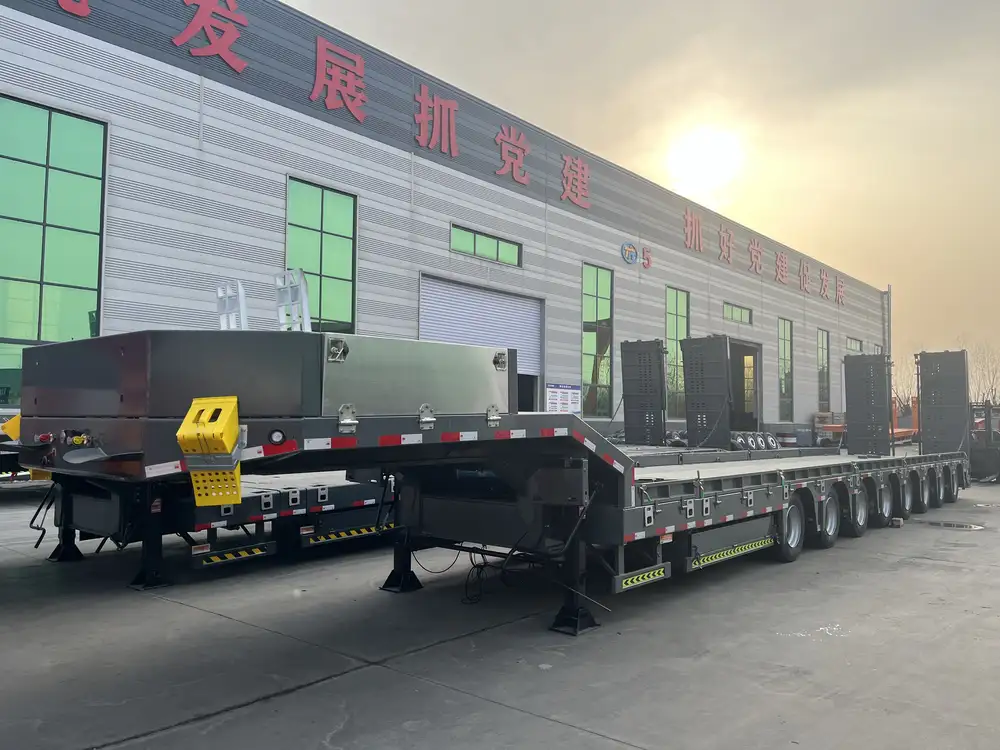Flatbed trailers have become an essential asset for various sectors within freight transportation due to their unique design and versatility. This article will explore the myriad uses of flatbed trailers, the benefits they bring to transportation logistics, and the key considerations when selecting one for specific needs.
Understanding Flatbed Trailers
Flatbed trailers are distinguished by their open, flat deck without sides or a roof, making them incredibly adaptable for transporting an extensive range of cargo types. Their construction typically comprises a sturdy frame and a bed that sits low to the ground, facilitating ease of loading and unloading. With a variety of configurations available, including two-axle and three-axle models, flatbeds can handle varying loads efficiently.
Common Uses of Flatbed Trailers

1. Transportation of Heavy Equipment
Flatbed trailers are the preferred choice for transporting heavy machinery and equipment such as excavators, loaders, and cranes. The flat design allows for vehicles to be loaded directly onto the trailer without the need for ramps or special lifting equipment, which enhances efficiency.
| Equipment Type | Typical Weight Range |
|---|---|
| Excavators | 15,000 – 70,000 lbs |
| Loaders | 10,000 – 30,000 lbs |
| Skid Steers | 3,000 – 10,000 lbs |
| Forklifts | 4,000 – 7,000 lbs |
2. Building Materials Transport
The construction industry relies heavily on flatbed trailers to transport a wide range of building materials. From lumber and steel beams to concrete blocks and roofing materials, flatbed trailers provide robust and stable platforms to ensure materials arrive undamaged and ready for use.
- Key Materials Commonly Transported:
- Lumber and plywood
- Steel girders and rebar
- Concrete forms and blocks
3. Automobile Transport
Flatbed trailers are widely used in the automobile industry for transporting vehicles. Their open design enables carriers to transport cars, motorcycles, and even larger vehicles like buses and RVs with ease. Flatbeds also facilitate stacking arrangements, allowing multiple vehicles to be transported simultaneously.
| Vehicle Type | Transport Considerations |
|---|---|
| Cars | Standard clearance required |
| Trucks | Weight distribution crucial |
| Motorcycles | Straps and pads needed |

4. Agricultural Use
In agriculture, flatbed trailers are invaluable for moving large amounts of produce, farm equipment, and even livestock. Their flexibility allows farmers to use them for a variety of purposes, including hauling hay bales, tractors, and other essential tools necessary for effective farming.
5. Transporting Oversized Loads
One of the standout features of flatbed trailers is their capacity for oversized loads, which do not fit within the constraints of traditional enclosed trailers. This makes them indispensable in industries requiring the transport of large, unwieldy items such as industrial machinery, shipping containers, and construction materials.
Benefits of Flatbed Trailers
Understanding the advantages of flatbed trailers is crucial for businesses considering their use.
Versatility
The open design of flatbed trailers permits the handling of diverse cargo types, accommodating various shapes and sizes, which is seldom possible with enclosed trailers.Ease of Loading and Unloading
The low-profile design enables straightforward loading and unloading processes with heavy equipment or machinery, minimizing downtime and enhancing work efficiency.Cost-Effectiveness
Due to their adaptability and robust construction, flatbed trailers can be a more economical option compared to specialized trailers, especially for businesses regularly transporting different types of loads.Fewer Restrictions
With fewer regulatory restrictions pertaining to load height compared to enclosed units, flatbeds enable more flexibility in what can be transported.

Selecting the Right Flatbed Trailer
When choosing a flatbed trailer, consider the following factors to ensure the right fit for your needs.
1. Trailer Size
The size of the trailer should match the type and quantity of cargo being transported. Common lengths for flatbed trailers range from 20 to 53 feet, as indicated below:
| Trailer Length | Cargo Type |
|---|---|
| 20 feet | Small equipment and tools |
| 40 feet | Construction materials |
| 53 feet | Large machinery and multiple vehicles |
2. Weight Capacity
Understanding the weight capacity of the trailer is vital to prevent overloading. Flatbed trailers are available with various weight ratings, typically ranging from 40,000 to 80,000 lbs. Ensure the trailer you select can accommodate your heaviest load.

3. Frame Material
The material of the trailer frame can impact durability and weight. Common options include:
- Steel: Offers strength and resilience but comes with added weight.
- Aluminum: Lightweight and resistant to corrosion, ideal for maximizing payload capacity.
4. Tire Configuration
The number and configuration of tires can influence stability, traction, and load distribution. Multi-axle flatbed trailers offer improved weight distribution, essential for heavy loads.
Safety Considerations in Using Flatbed Trailers
Safety in operating flatbed trailers is paramount. Here are critical safety measures every operator should follow:
- Load Securement: Always use appropriate tie-down equipment, such as straps, chains, or nets, ensuring cargo remains secure during transit.
- Weight Distribution: Properly distribute weight across the trailer to guarantee balance and prevent swaying or tipping during transport.
- Regular Maintenance: Conduct routine inspections and maintenance checks on brakes, tires, and frame integrity to prevent mechanical failures.
- Operator Training: Ensure that all operators are properly trained, understand load limits, and are familiar with securement procedures.

The Future of Flatbed Trailers
As technology progresses and the transportation industry evolves, flatbed trailers are also adapting. Innovations in design are enhancing efficiency, such as:
- Telematics Systems: Implementing tracking technologies that allow for real-time monitoring of cargo and vehicle performance, improving logistics and reducing delays.
- Composite Materials: New materials are being developed for trailer construction that provide increased strength-to-weight ratios and enhanced fuel efficiency.
Conclusion
Flatbed trailers represent a cornerstone of freight transportation due to their unmatched versatility and efficiency in handling various types of cargo. From heavy machinery and construction materials to automobiles and oversized loads, they cater to a vast array of industries, making them indispensable in the modern logistics ecosystem.
By understanding their applications, advantages, and key factors for selection, businesses can make informed decisions that optimize their transportation operations. Whether you are involved in construction, agriculture, or logistics, leveraging flatbed trailers can offer significant enhancements in productivity and cost-effectiveness.
As the landscape of transportation continues to evolve, keeping an eye on advancements will ensure that your flatbed trailer operations remain in line with industry trends, driving efficiency and success in your logistics journey.



